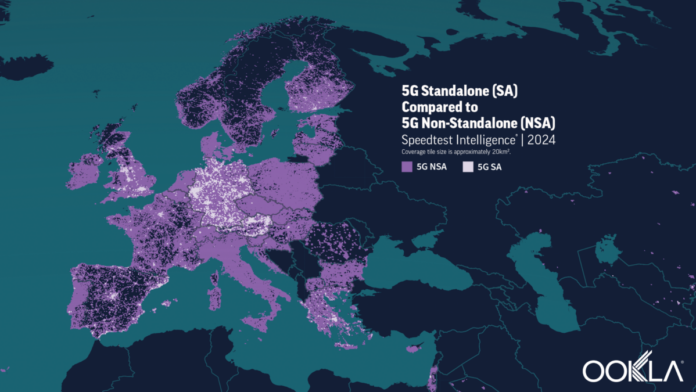5G SA is great, but its progress in Europe? Not so great — says Ookla
Ookla this week released a report examining Europe’s 5G Standalone (SA) competitiveness as it compares to other major global regions. The results show that, despite Europe’s ambitious 5G infrastructure targets — namely, the European Commission’s recent launch of the “Competitiveness Compass,” which outlines 5G SA investments as a central driver — the region is showing “the poorest outcomes” in terms of 5G SA performance and availability.
Based on Ookla’s data from Q4 2024, China (80%), India (52%) and the United States (24%) are not only leading the SA charge, but are massively ahead of Europe, which shows only a 2% SA market share. Further, Europe is also falling behind on other key metrics, including median 5G SA download speeds, with the average European consumer experiencing download speeds of 221.17 Mbps, compared, for instance, to 384.42 Mbps in the Americas.
“The interplay of earlier deployments, a more diversified multi-band spectrum strategy, and greater operator willingness to invest in the 5G core to monetize new use cases have driven rollouts at a faster pace in regions outside Europe,” stated Ookla.
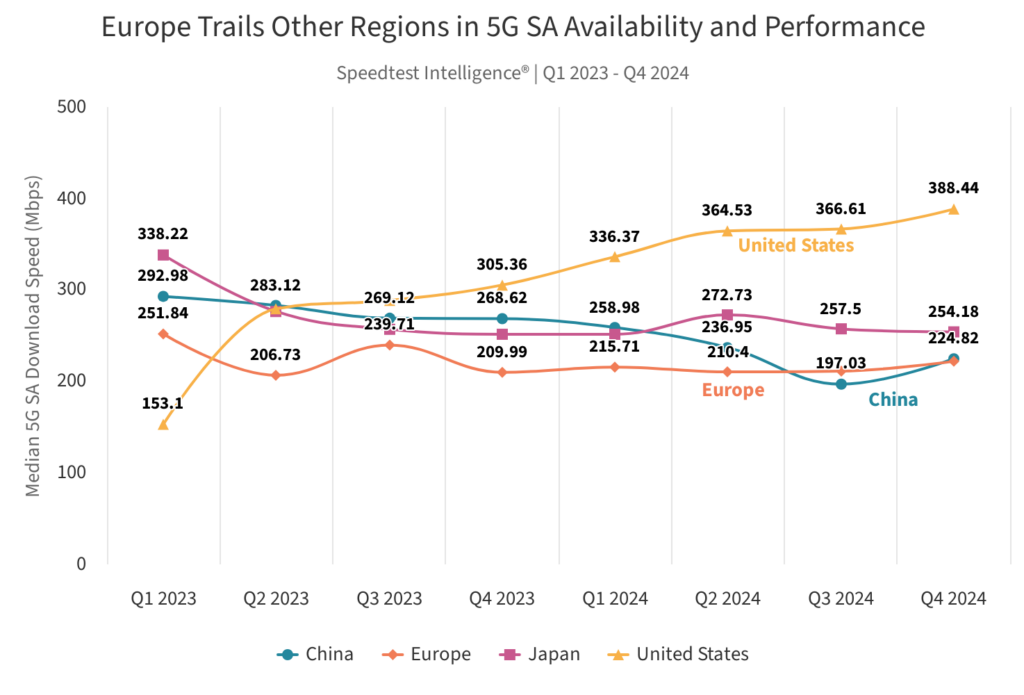
Another trend revealed in the report is the disparate progress of 5G Standalone across Europe, with the best outcomes observed in countries that have specific policies intended to incentivize 5G SA deployment. For example, Germany, the United Kingdom and Spain are all have targeted 5G SA-specific fiscal stimuli or coverage obligations, and all are currently leading Europe in terms of 5G SA rollout across multiple operators. Additional takeaways include Greece’s lead when it comes to median download speed in Q4 2024 at 547.52 Mbps due to its use of the 3.5 GHz and the fact that Spain and Austria are “excelling” in rural 5G Standalone coverage as a result of their deployment of the 700 MHz band.
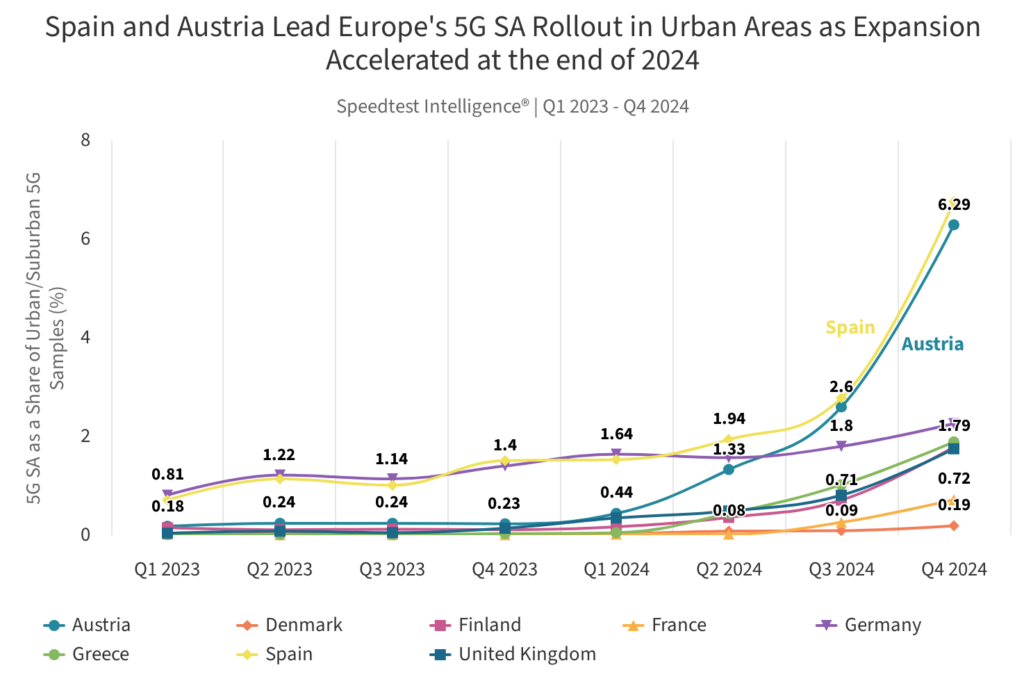
Regardless of region, Ookla found that 5G Standalone are consistently delivering “significantly improved performance across key metrics compared to the non-standalone architecture.” In Q4 2024, the median latency was almost 20% lower on 5G SA networks compared to 5G Non-Standalone (NSA) networks in both Europe and China, and more than 25% lower in the United States and Japan, the firm stated. And the median download speeds on 5G SA were more than 57% higher in Europe and 84% higher in China.
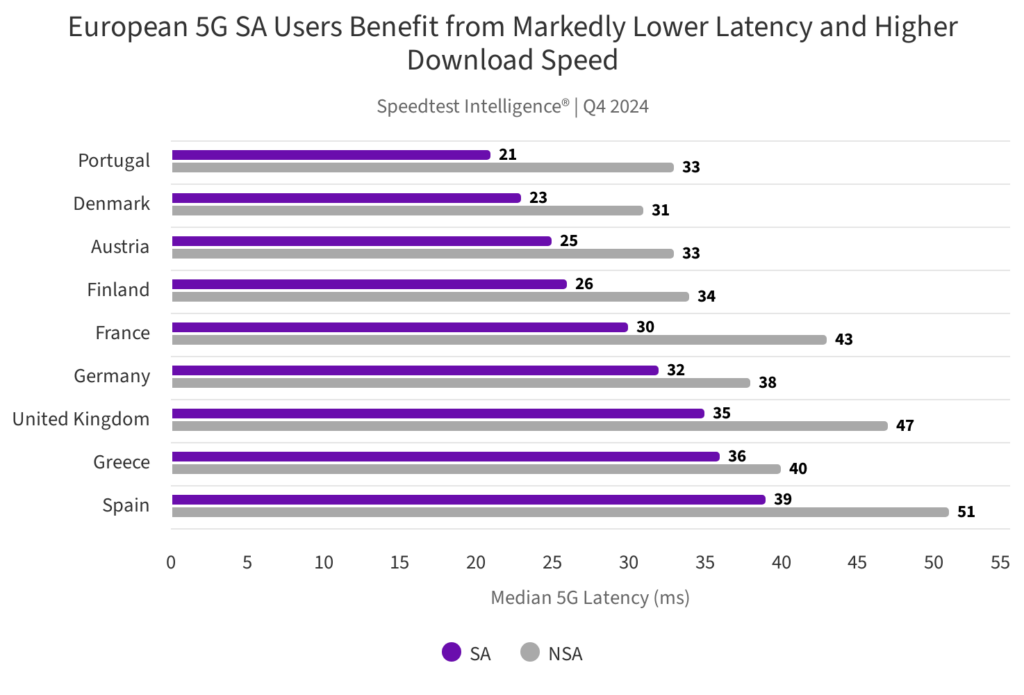
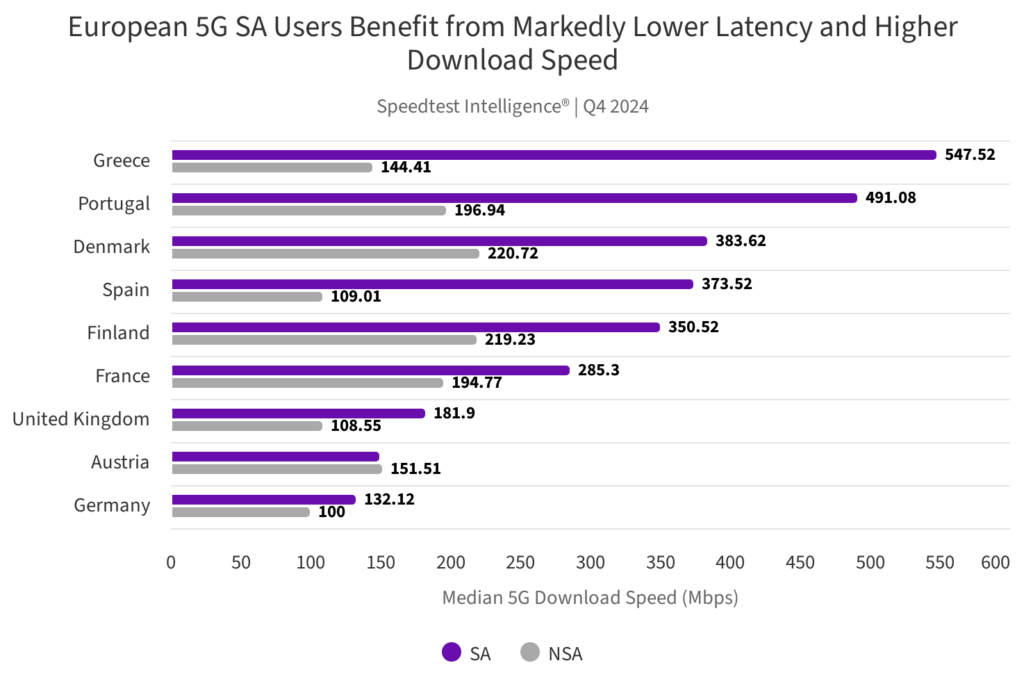
“Notwithstanding these improvements, 5G SA’s full potential remains largely untapped in Europe,” said Ookla. “Advanced uplink capabilities unlocked by the technology—such as higher-order MIMO and carrier aggregation—remain limited to a few operators in leading markets like the United States, highlighting the still nascent profile of the device and equipment ecosystems for 5G SA.”
The firm identified BT’s EE in the U.K., Deutsche Telekom in Germany, Elisa in Finland and 3 in Austria as the telcos making the biggest 5G Standlone progress in Europe.

